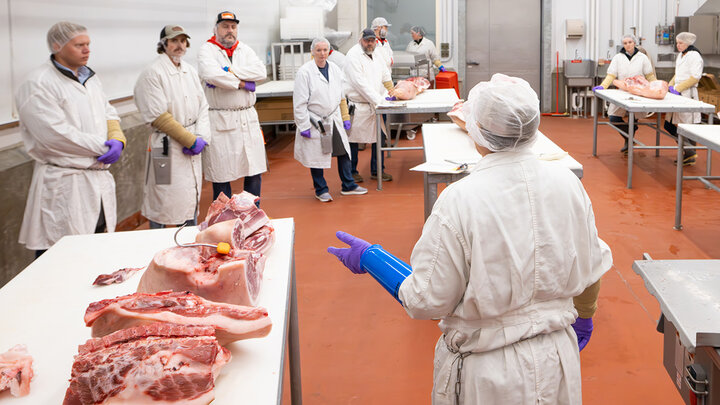Coach Bear Bryant is purported to have said, “winning isn’t everything, but it beats anything that comes in second.” Often, I hear the sentiment, “profit isn’t everything.” Continuing with the attitude expressed by Coach Bryant, I would expand his statement to something like this: “profit isn’t everything, but it sure beats a loss.”
Farm and ranch operators who are profitable are more likely to control the fates of their businesses, pass on their operations to their progeny, and accomplish the objectives they wish for themselves and their families. So why do I mention this? Over the past few years, I have been involved with the University of Nebraska’s TAPS program. This program is a contest where producers compete, primarily on making a profit. The idea is that contestants learn from experiences and one another. It is all about increasing farm management ability, creating new knowledge for its participants, benchmarking individuals amongst peers, and more.
What I have observed is that those who generally “win” the TAPS competitions and make the most profit are producers who have a balanced outcome. These competitors wisely use inputs, such as water, seed, fertilizer, insurance, and time and have low per-unit or per-bushel costs. While these individuals do not always have the highest yield, they generally have excellent yields, and while the per-acre costs of these producers are generally high relative to others, their yields are such that per-unit costs are among the lowest. Translated, this means that they use the appropriate inputs in an appropriate manner and that they are skilled agriculturists.
Although, this is not all, as they are able to capture good market prices — not generally the highest, but better than average. The point to be made here is that a producer, who balances their management and creates a synergy of operations — meaning that the good yields foster low costs, wisely used inputs create good yields, and above average prices result in good profits — results in high yields leveraging into substantial profits per acre.
Having a balanced operation requires discipline and knowledge. The knowledge is of two types: technical and actualization.
The first type of knowledge is fundamental and specific to the farming operation and location of the farm, (e.g., knowing the crop grown, the needed inputs and their proper uses, in the specific environment, etc.) The second type of knowledge, actualization, is more difficult and somewhat abstract, and requires effort, objectivity, and honest introspection and reflection. Many of you have probably heard of the acronym SWOT. This is a mnemonic device used to denote a business analysis tool for assessing a business, situation, or environment. There are many tools for doing such analysis, and I only use this one as an example. There are many ways for a farm business operator to perform an actualized evaluation of their operation, farm, and/or management acumen.
SWOT presents the idea of looking critically at your operation and operational abilities in terms of strengths, weaknesses, opportunities, and threats (SWOT). Whether one uses SWOT or some other method, the key point here is that you take the time to understand your operation and how it runs, so that weaknesses can be addressed, strengths leveraged, challenges recognized and opportunities taken, improving overall operational, business and personal performance.
Farming and ranching operations are places where, no matter how much is accomplished, there is always something else that could be done. Time is a limiting factor in all operations and requires careful allocation and attention to doing the “right things.” The fact is that we are all often so close to the forest that we can’t see the trees, metaphorically, of course. It is important to take the time, not during planting, harvest or other busy periods, to evaluate the operation’s performance, manager’s skillset and goal progression. It is important to identify things that are going well and those that are not, make notes, set goals and be honest about how the farm/ranch is performing and progressing. Otherwise, one could end up in a similar situation to Alice from Lewis Carroll’s (1865) Alice’s Adventures in Wonderland:
Alice: Would you tell me, please, which way I ought to go from here?
Cheshire Cat: That depends a good deal on where you want to get to.
Alice: I don't much care where.
Cheshire Cat: Then it doesn't much matter which way you go.
Alice: ...So long as I get somewhere.
Cheshire Cat: Oh, you're sure to do that, if only you walk long enough. (pp. 71-72)
While there are many ways to gain actualization knowledge, the important thing is that you take the time and make the effort, collect the information and begin its application. Some would think such exercises are too time consuming, but from what I see, the only way to make progress is to have a measured, consistent plan based on the facts about you and your operation, all of which take time and effort. No one does everything perfectly, but there is always room for improvement and, of course, more profit.




